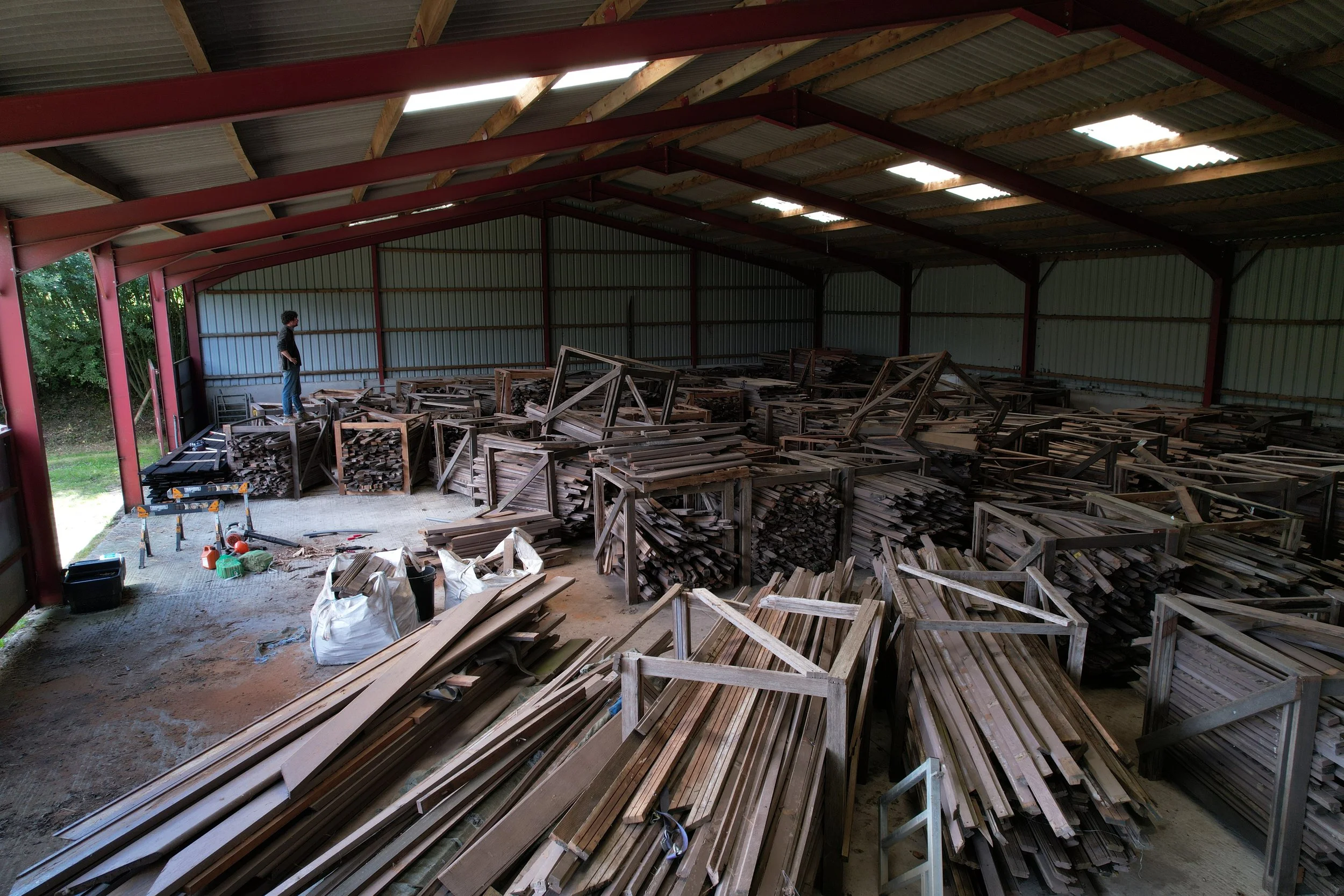Salvaged Iroko: a new beginning
From the ceilings and floors to the swimming lake's jetty, 50 tonnes of reclaimed Iroko wood form an integral part of The Nant's design. Sam Meehan shares how he saved this beautiful African hardwood from the scrapyard.
A few years ago, we heard of of an opportunity that was too good to pass up: a building in East London was stripping off 50 tonnes of solid Iroko hardwood cladding — destined for scrap. The removal was prompted by new fire safety regulations introduced in the wake of the Grenfell tragedy. Despite the timber’s incredible quality, it no longer met the updated code, and the contractors were not only discarding it but paying to do so. We offered to collect it instead.
For those unfamiliar, Iroko is an African hardwood often referred to as “African teak” due to its similar grain, durability, and resistance to rot. It's incredibly dense, naturally oily, and stable in water — making it ideal for external use, from boat building to decking and cladding. Left untreated, it ages into a beautiful silver-grey patina, and it’s known to last for decades even in the harshest environments.
Taking the Iroko home
We built custom crates that could sit snugly side-by-side on an articulated lorry and began the haul. Over eight full lorry loads of Iroko were transported up to The Nant and stored in barns for future use. The haul included everything: cladding, balustrades, decking, and massive structural timbers.
The real work began in the processing. The boards were painted on one side, many riddled with nails. We tried sanding first, but the labour was too intense. So instead, we ripped each board down the middle, revealing two fresh, clean faces of reddy golden timber — and effectively doubling the amount of usable cladding.
Since then, this reclaimed Iroko timber has found new life all across The Nant:
At Ebba, our lakeside cabin, Iroko lines the ceiling and wraps the jetty leading to the sauna.
At Ty Canol, the hillside house, it clads over rendered breeze blocks, transforming the façade.
Our master carpenter, Ed Payne, crafted a full set of windows and doors from the old balustrades.
The chunkier timbers have been used to support decks extending over the lake, where their underwater stability really shines.
In one of our bathrooms, the Iroko makes up the entire floor, warm underfoot and rich in colour.
And this month, it will form the outdoor staircases that lead to our two newest cabins.
What started as salvage has become one of the most characterful and sustainable threads woven through our design work. This reclaimed Iroko will be part of our buildings for years to come — rich in history, beautiful in form, and a reminder that great design often begins with great materials, used thoughtfully.

